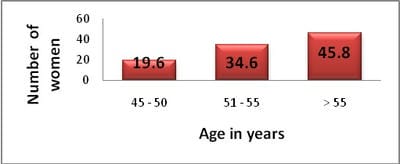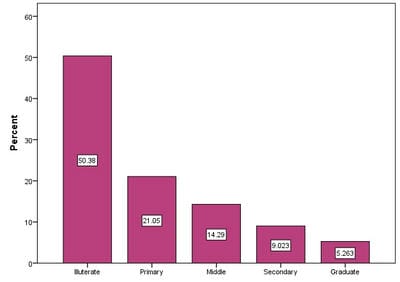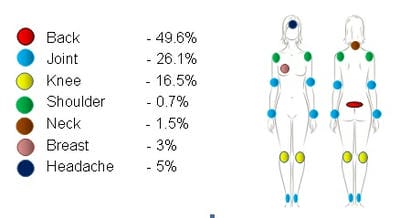Quality of life among post - menopausal women in rural Puducherry
Surendar R.1, Durgapriya G.2, Arthi M.3*, Srikanth S.4
DOI: https://doi.org/10.17511/ijphr.2019.i3.03
1 Surendar R., Assistant Professor, Department of Community Medicine, Sri Venkateshwaraa Medical College Hospital and Research Centre, Puducherry, India.
2 Durgapriya G., III MBBS, Sri Venkateshwaraa Medical College Hospital and Research Centre, Puducherry, India.
3* Arthi M., Assistant Professor, Department of Community Medicine, Sri Venkateshwaraa Medical College Hospital and Research Centre, Puducherry, India.
4 Srikanth S., Professor, Department of Community Medicine, Sri Venkateshwaraa Medical College Hospital and Research Centre, Puducherry, India.
Background: Postmenopausal women are the most vulnerable group affected due to physiological changes. The quality of life during the menopause is assessed by the frequency and severity of menopausal symptoms. Objectives: To assess the menopause symptoms and quality of life among post-menopause women in rural Puducherry and study the socio-demographic factors associated with menopausal symptoms and quality of life. Methods: A cross sectional study was conducted in rural field practicing area of a medical college. 133 postmenopausal women were selected from 3 villages by Simple random sampling. Socio-demographic details and menopausal symptoms using modified MENQOL questionnaire was elicited. Body mapping was done by the participants. Results: The mean age was 51±2 years. About 32% of them were suffering from any one of the chronic diseases like Diabetes, Hypertension. Joint pain (79.2%) was found to have higher prevalence and reduced sexual desire (2.3%) as lower prevalence. Overall, sixty four study population had no menopausal symptoms followed by 35 with mild, 20 had moderate menopausal symptoms. Significant association was seen between age of menopause and the severity of the menopausal symptoms in vasomotor and psychosocial domains. Positive correlations were seen among the domains. Majority (65%) of the women perceived pain any of the parts in body mapping which affects their day to day life. Conclusion: The Quality of life (QOL) of the post-menopausal women was poor based on the presence of symptoms in many domains.
Keywords: Menopause, Quality Of Life, Body mapping
| Corresponding Author | How to Cite this Article | To Browse |
|---|---|---|
| , Assistant Professor, Department of Community Medicine, Sri Venkateshwaraa Medical College Hospital and Research Centre, Puducherry, India. Email: |
Surendar R, Durgapriya G, Arthi M, Srikanth S. Quality of life among post - menopausal women in rural Puducherry. Public Health Rev Int J Public Health Res. 2019;6(3):112-118. Available From https://publichealth.medresearch.in/index.php/ijphr/article/view/108 |


 ©
© 

